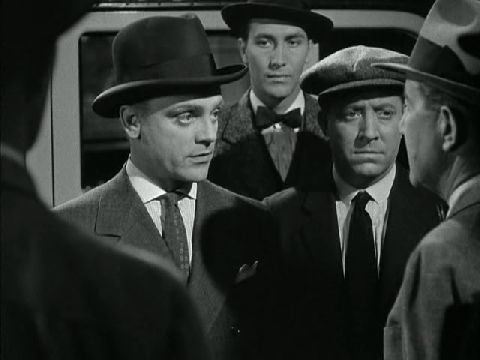The Roaring Twenties (1939) 
“America’s Most Colorful Era!”

Director: Raoul Walsh
Cast: James Cagney, Humphrey Bogart, Priscilla Lane
Synopsis: Three men attempt to make a living in Prohibitionist America after returning home from fighting together in World War I.
WARNING – This review contains SPOILERS!
The Roaring Twenties is one of the films that first got me into movies back in the mid-70s when I was just a callow youth, and it still looks pretty good to me thirty years later. James Cagney, Humphrey Bogart and Jeffrey Lynn play three war comrades who find their lives inextricably entwined as they all become involved in lives of crime in different ways.
Bogart was still toiling away as one of Warner’s stock villains when The Roaring Twenties was made and he’s far from the finished article although his performance as the double-crossing rat who pays allegiance to no-one and thinks nothing of killing anyone who stands in his way, is still convincing. Cagney was at the top of his game, at the front end of a near unbroken string of box office hits which would only come to an end when he left Warners in the early forties because of contractual disputes. He plays Eddie Bartlett, an everyman soldier with both good and bad in him (unlike Bogart, who is evil to the core, and Lynn who is insipidly good) who finds himself spearheading gangland’s prohibition racketeering when he hooks up with nightclub owner Panama Smith (Gladys George).
The direction by Raoul Walsh is tight and economic, and Mark Hellinger’s story is punctuated with news montage sequences told in the stentorian tones of a March of Time newsreel. There’s an almost nostalgic feel to it all and an almost sweeping grandeur to the story as it chronicles not just Bartlett’s descent into a life of crime (as glamorously as it possibly can), but the entire nation’s as it embraced a drinking culture inspired by the government’s ill-advised prohibition laws. It’s all delivered with Warners’ typical no-nonsense approach, and topped with one of the most memorable death scenes in movie history. The imagery and symbolism of Cagney’s fatally wounded anti-hero careering into a mail box before woozily ascending the stairs to Josiah Weir’s impressive church only to come crashing down as his life comes to an end might be obvious but that doesn’t make it any less effective.
This is one of those classic movies that everybody likes and, unlike some other Cagney classics such as Angels With Dirty Faces and Public Enemy, the passage of time has done little to dim its impact. Be sure to catch it if you get the chance.
(Reviewed 12th August 2008)
httpv://www.youtube.com/watch?v=-zrSKQg1mhU
